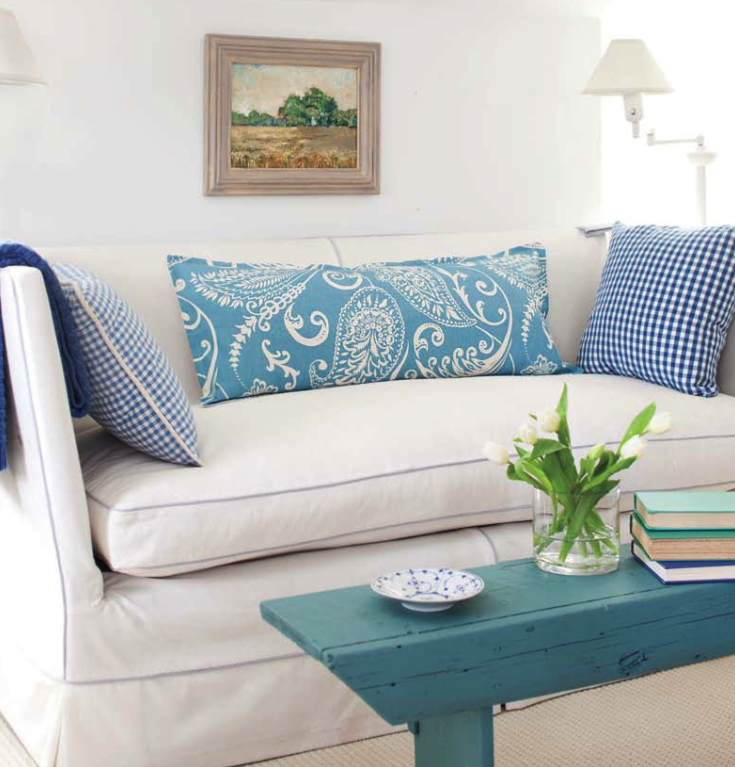
In general, I prefer neutral rooms with walls and floors and furnishings defined in shades of cream, oyster, amber, chocolate and gray. But there’s something about summer that brings out my colorful alter ego—and I love introducing pops of color that play off Mother Nature’s seasonal styling cues. One of the ways I like to do this is with easy-to-switch-out accents, such as pillows. Sometimes my husband will let me look through the showroom of Milli Home, a company he owns with his partners that produces affordable pillows, poufs and table linens for retailers such as Home Goods, Sam’s Club, Costco, T.J. Maxx and other retailers and shops. Often I’ll find a leftover sample or two that I can bring home and toss on a sofa or chair for an instant update. Other times, I’ll get a yard or two of fabric from a company like Maine Cottage, Company C or Free Spirit Fabric and whip up a pillow or tablecloth myself.
I designed this flanged lumbar pillow when I was the editor of a magazine called Easy Decorating. The project appeared in a story on a collection of easy-to-make soft furnishings that I designed. A book I wrote called Curtains, Cushions, Covers & Blinds (Mitchell Beazley)—also known as Curtains, Pillows, Covers & Shades (Creative Homeowner)—features an even wider range of easy sewing projects, many of which I produced myself for my own home. Adding new soft furnishings like this pillow is also a great way to introduce a punch of pattern to brighten the ambience in summer. Here’s how you make this pillow:
Materials: 1 yd. fabric, pencil, yardstick, scissors, pins, iron, thread, sewing machine, 14”x16” pillow form.
Directions:
1. For pillow front, measure, mark and cut on 16”x38” piece of fabric. For back, cut two 16”x22” pieces of fabric.
2. Turn under and press a 1” double hem along one 16” edge of one back piece. Stitch in place close to the folded edge. Repeat for remaining back piece.
3. With right sides facing and raw edges matching, pin pillow front to pillow backs together, overlapping the hemmed edges of the backs in the center.
4. Stitch around all edges with a ½” seam allowance. Clip the corners of the allowance, turn cover right side out and press.
5. To create the flange, topstitch around all edges of the pillow cover ½” from the seamed edge. Then topstitch again 1/16” from the seamed edge. Insert the pillow form.



